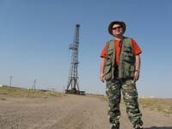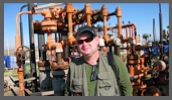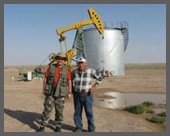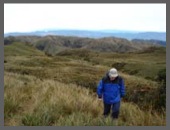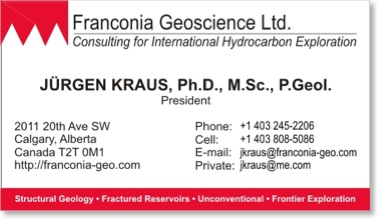
Franconia Geoscience Ltd.
GEOLOGICAL CONSULTING FOR INTERNATIONAL HYDROCARBON EXPLORATION SINCE 2003
Jürgen Kraus acquired a B.Sc. equivalent from Würzburg University, Germany, in 1986. After an academic year at the University of Hull in the U.K. and an internship with Badley Geoscience Limited in 1987, he pursued an M.Sc. (in structural geology, geophysics, and metamorphic petrology) and simultaneous contract work at the University of Göttingen, Germany. His thesis and work dealt with microfracturing in granites around the German Continental Deep Drilling Program pilot hole, and he conducted his M.Sc. mapping project in the Moine thrust belt of the northern Scottish Caledonides.
Following graduation in 1991, Jürgen worked on a Ph.D. with the influential field-based structural geologist Dr. Paul F. Williams at the University of New Brunswick, Canada (JSG 2011 article on Paul’s mentorship) [Ph.D. thesis for download]. He unravelled the structural and metamorphic history of part of the southeastern Trans-Hudson orogen of Manitoba. The project was integrated in the national NATMAP Shield Margin and Lithoproble Trans-Hudson Orogen Transect programs and resulted in four peer-reviewed journal articles (and countless government reports and conference abstracts).
In 1998, Jürgen continued his studies of multiply deformed, crystalline rocks in Manitoba at the Geological Survey of Canada in Ottawa, for which he worked on the Kisseynew-Superior boundary zone, a major Paleoproterozoic continental collision zone (CAMIRO Thompson Nickel Belt Project). After a short stint at Aachen University of Technology in Germany, where he developed Adaptive Hypermedia computer-based structural geology teaching tools, he joined the Saskatchewan Geological Survey and mapped in the Archean Rae and Hearne cratons, around Uranium City and Bonokoski Lake, in 2000 and 2001.
Jürgen entered the Calgary oil patch through Shell Canada’s Southern Foothills Business Unit in 2001, where he modelled the structure of/interpreted the seismic of/generated drillable prospects in the Waterton thrust stack. He also generated a drilled prospect in laterally imbricated thrust sheets of the Wildcat Hills.
In 2003, he moved into international exploration with Sunwing Energy Ltd., a subsidiary of Ivanhoe Energy Inc., and worked on their Zitong tight/continuous gas property in the Sichuan Province of China. He delineated the structural and sedimentary history and stress fields, participated in seismic acquisition, interpreted seismic, and, amongst others, conducted fracture studies in drillcore and outcrop. He participated in the drilling of four deep wells at a budget of more than $50 MM, the best of which flowed over 13 mmcf/d.
In 2006, Jürgen took a brief leave of absence from the Sichuan project to conduct grassroots Inca gold exploration in the central Andes of southern Ecuador. The gold mineralizations were contained in large epithermal quartz veins above a thermal granite engine. He submitted his findings as a National instrument 43-101 report to the Ontario Securities Commission.
From late 2009 to the end of 2010, Jürgen was the principal geologist of Sunwing’s Mongolia Nyalga PSC-XVI conventional oil project. He unravelled the tectonometamorphic history of parts of eastern Mongolia, participated in the seismic interpretation of transtensional lacustrine basins, and established the local (sequence) stratigraphic framework. He further evaluated the petroleum systems and play concepts of the Nyalga basin relative to the East Gobi ‘analog’ basin on location and submitted his findings as reports to the Petroleum Authority of Mongolia.
Between 2011 and 2013, Jürgen evaluated the total geology of and investigated new play concepts in the inverted Essaouira Atlantic rift basin of Morocco. The basin area, which hosts the country's largest hydrocarbon accumulations, was connected to Nova Scotia, Canada, prior to Atlantic rifting that commenced in the Permian. Its development is closely related to the evolution of the Atlas mountain system. The basin records a protracted history of continental and marine sedimentation as well as multiple deformation and salt tectonics. He was instrumental in creating a high-risk high-reward prospect that attracted $30 MM in investment capital. One well was drilled in Q3 2013, the other in Q2 2014.
Most recently, Jürgen analyzed the prospectivity of and created new play concepts and drillable prospects in the Southern Permian Basin, the Rhenohercynian basin, the German-Polish Caledonides and the Baltic shelf (clastic rocks and carbonates).
Jürgen has been Co-Chair of the CSPG International Division since 2013 and a Director of the Canadian Global Exploration Forum (CGEF) since 2014. He has been an Executive of the Canadian Tectonics Group since 2002.
